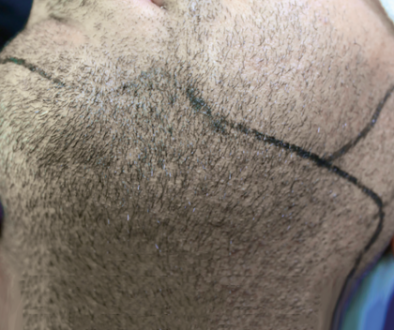Hair Transplants: Why Is the Crown Called the ‘Black Hole of Grafts’?
This hair transplant article was written by Dr. Blake Bloxham, a staff physician from Feller Medical:
 Crown hair transplants can be tricky. There is a reason why they are often referred to as the “black hole of grafts” online. The large surface area requiring coverage and the twists and turns of the “whorl” pattern call for a lot of grafts. On top of this, they notoriously thin in a circular spreading pattern that is tough to keep up with.
Crown hair transplants can be tricky. There is a reason why they are often referred to as the “black hole of grafts” online. The large surface area requiring coverage and the twists and turns of the “whorl” pattern call for a lot of grafts. On top of this, they notoriously thin in a circular spreading pattern that is tough to keep up with.
However, they are also very often a crucial area for hair transplant patients. Although I do believe the frontal/midscalp regions are more cosmetically significant, many patients don’t feel like their transformation is “complete” without crown work; or they can’t stand thinking that they still have a “bald spot like my father/grandfather” back there.
So crown hair transplants are important. They must be planned thoroughly and lifetime grafts must always be kept in mind, but important nonetheless.
The patient in this video is a good example of what crown patients should expect. He underwent 3,300 grafts total over two passes (the first to address the upper crown, and the second to address the whorl pattern and the lower crown after he had further receded) and now has a very full and natural crown.
Here is his “comb-through” video. Tried to be as transparent and thorough as I could here, because expectations are important!
Dr. Blake Bloxham
Feller and Bloxham Hair Transplantation
—-
David
Editorial Assistant and Forum Co-Moderator for the Hair Transplant Network, the Coalition Hair Loss Learning Center, and the Hair Loss Q & A Blog.
Technorati Tags: hair transplant, hair transplants, bald



